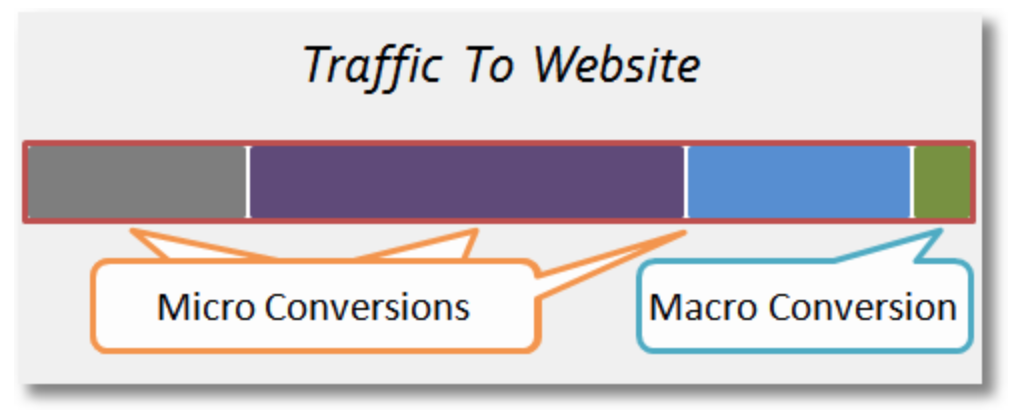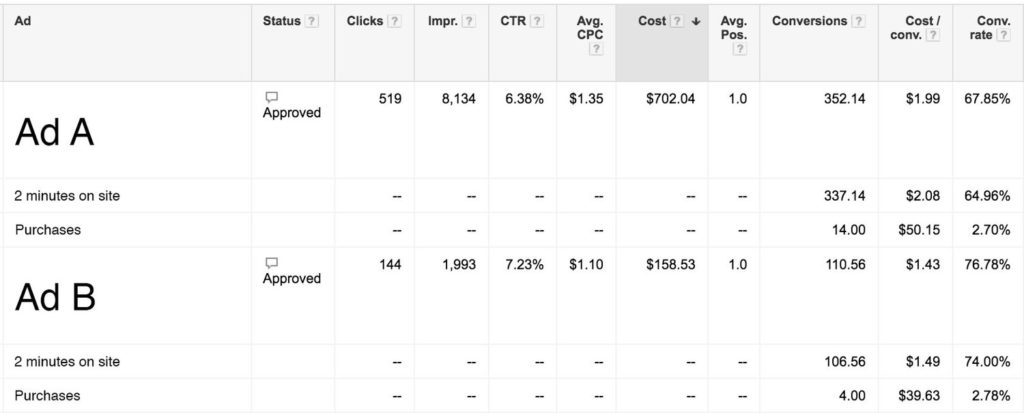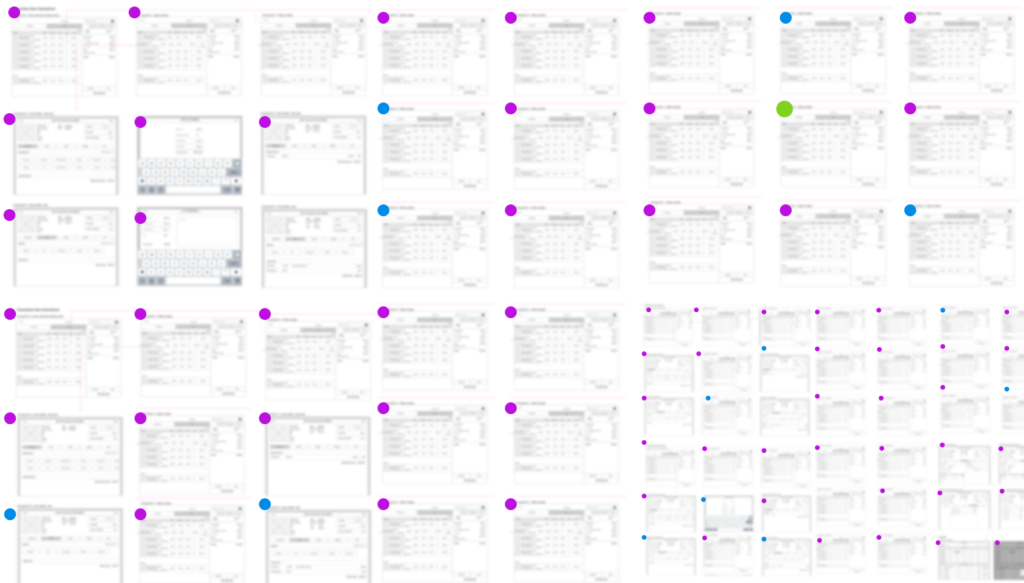Category Results:
Camp Creative Listed As The
Top Graphic Design Agency By Clutch
How do you convey what you are thinking without using a single word? Charades work but are too interpretive. Dance is an option but not everyone has rhythm. Smoke signals are fun but not ideal for indoor use. This leaves clear and compelling visual design to pick up the slack left by its cousins. With nonverbal communication, whether it be logo design, graphic design, iconography, animation or textual layout, most marketers agree: presentation is everything.
Commitment to User Experience Design
From full website design to graphic element design, everything we do starts with an understanding of the end-user. We take the time to understand what message needs to be sent and how to send it. Everything we design speaks with a clear voice and a carefully curated aesthetic specific to each client and each message. We find that approaching design with both strategy and creativity in mind delivers the best results for our clients and enables us to express complex ideas and emotions in simple, immediately understandable ways.
A Top Digital Service Provider
We have been ranked as the top graphic designer in San Francisco by Clutch, a B2B services consultancy based in Washington, DC. Clutch uses in-depth market research and client reviews to identify top service providers and help firms hire smarter. After evaluating almost 100 of the top graphic designers in San Francisco, Clutch named Camp Creative the number one agency.
Aside from our design capabilities, we have been recognized for our strategic digital marketing expertise with unrivaled SEO skills. This acknowledgement comes to us from The Manifest, a business resource that helps teams leverage their business challenges into opportunities for growth. They highlighted us for our ability to build attractive brands and help them be found a little more easily.
A Fan Favorite
In addition to the praise we have received from industry analysts, we have also received a number of verified reviews from our amazing clients.
When asked what they found impressive about Camp Creative, one client said:
“The way they balance creativity and data management is pretty impressive. It’s rare to find a company with that balance.”
And when asked about the impact of our work on their business, another client said,
“We have seen an increase in our keyword rankings, and the new site looks much better aesthetically than it did before. It conveys that we are a company capable of doing large-scale business.”
Check here to read the full reviews and keep up with what else our clients are saying about us. Thank you to everyone who has worked with us, and helped make 2018 such a great year for Camp Creative. We are proud of everything we have achieved together and are committed to continuous improvement in the future.
Camp Creative Listed As 2018
Top Digital Agency by Clutch

Exactly what a digital marketing agency does can be difficult to discern. And, because the digital world gets more complex with each passing year, many agencies are deciding to specialize in one, or few, specific aspects of it.
Full-Service Approach
At Camp Creative, however, we remain steadfast in our full-service, holistic approach. More than ever, we believe that successful digital marketing requires a complete vision: overarching strategies, tactics and activities to be expertly orchestrated across a variety of channels.
It’s our unique combination of business knowledge, creative execution and technical know-how that, at the end of the day, help our clients acquire customers and accelerate sales via digital. As creatives, we understand that good design directly correlates to business growth. As business minds, we know that cutting-edge technological expertise and careful digital execution can make all the difference.
Rated Top Digital Agency in San Francisco
Clutch, the online ratings and review firm, is well-versed in the world of digital agencies. Based in Washington, D.C., Clutch compiles client testimonials, case studies and objective, quantitative information to establish a consistent baseline for quality and content throughout the world.
Clutch recently announced the top California business service companies listing on their website. We were one of about 500 companies to be included. When you consider that Clutch lists thousands of companies in California, we were thrilled to be ranked a top digital agency in San Francisco. But we didn’t get there alone. Through a united and concerted effort with our clients, staff and partners, we were able to establish ourselves as a leading agency.
Website Design and Development
Here’s what a few of our clients had to say about our website design and development work.
The Marketing Director at Bay Alarm said:
Sales are up, which is really the ultimate measure and sign of success. We’re increasing the conversion rate and the revenue generated by the site. The SEO ranking has generally improved, but since it fluctuates so much it is a process of constant improvement. The new website is more professional, easy to navigate, and focused on the right audiences.
The Director of Sales and Marketing at a telecommunications company noted:
I was impressed by the speed of the development process. With Camp Creative, it was interactive. They gave me clear instructions on how I could edit and update content. I was able to see the site not long after they started it and QA was seamless.
Founded in 1999, we are a San Francisco firm with a full-bodied cache of work experience that transcends the standard and uplifts the excellent. We’ve worked with many of Silicon Valley’s greatest brands and continue to do so on a daily basis.
Clutch ratings and reviews will only help us bolster our processes and quality of work in the future. What a great way to finish an already strong year. Thank you to Clutch and everyone we worked with in 2018!
Micro-optimization: How to Optimize Your Campaigns Faster and More Effectively
So what is micro-optimizing?
Get ready for some good old fashioned digital marketing nerdsplaining!
Micro-optimizing is using small but statistically significant tests based on micro-conversions to determine what is working best in your campaigns.
It empowers you with the data that you need to optimize your campaigns for better results much faster and more effectively.
What is a micro-conversion?
A micro-conversion is built on Avinash Kaushik’s idea of “micro” and “macro” conversions.
Simply put, a ‘macro’ conversion is going to be whatever is bringing in revenue for your business. Be that software subscriptions, dog training treat sales, or a new client for your agency.
A ‘micro’ conversion is going to be anything that leads up to that macro conversion. I.e someone spending 5 minutes on your site reading your marketing materials. Or someone putting a product in your shopping cart before buying to see what the total cost with tax and shipping would be (tip you should be retargeting these people with abandoned cart ads).
Why do we need it?
Many times, a businesses web analytics measurement model looks something like this:

Image borrowed from Avinash’s blog post – full credit to Avinash.
Most websites are going to a macro-conversion rate around 2%. If you only look at your main conversion that means you are essentially ignoring the 98% of website visitors that did not purchase from you on their visit.
Your measurement should look more like this:

It’s plain to see that filling the measurement model with insightful data is going to give you much more information to use in optimizing your campaign and your businesses performance.
In addition to helping you better understand your website audience, micro-optimizing can be used to optimize your paid marketing campaigns to determine the best:
- Audience
- Ad copy
- Keyword
- Bid strategy
- Landing page
And more….
How can I start ‘micro-optimizing’ my campaigns?
The first step is going to be setting up your measurement model to include micro-conversions. You need to do this in your analytics platform (which is going to be Google Analytics for the vast majority of businesses). Facebook is going to be a little different and we’ll get into that below.
There are many different types of micro-conversions but ultimately the ones you choose should do these 2 things:
- 1. Align with real business goals and objectives
- 2. Correlate to these business goals and objectives. I.e you should know if someone spends 10 minutes on your site that they are more likely to buy than someone who spends 2 seconds. Or someone who requests a free audit is likely to become a client.
- 1. Create the goal in Google Analytics. Kissmetrics gives a good walkthrough here.
- 2. Import the goal(s) into your Google AdWords account.
- 3. Start optimizing!
For a small digital marketing and design shop like ours, we would want to data like:
“Users that spend at least 2 minutes on our site” or “Users that viewed at least 2 pages on our site”. These certainly align with our business goals and correlate with potential client behavior.
For a SaaS company that sells to Marketing VP’s at Fortune 500 companies, maybe their micro-conversion is a PDF download, or a request for product demonstration by a salesperson with a cleverly disguised non-salesy sounding title.
AdWords example:
The best way to do this for AdWords campaigns is to set up some sort of goal in Google Analytics and then import it into AdWords. This will give you the data you want down to the campaign, ad group, keyword, ad level.
This is as granular as you can get, but you’ll need to make sure that your AdWords and GA accounts are linked first.
Facebook Ads:
Facebook does not play well with Google Analytics at all. There is not a direct integration like there is from AdWords to Google Analytics.
Even when you set up Google Analytics tracking URLS (UTM codes) you will probably only see a fraction of clicks from Facebook actually translate into trackable sessions in Google Analytics.
To “micro-optimize” in Facebook, you will want to set up the relatively new Facebook pixel on all pages of your website or mobile app and then setup event tracking and/or custom conversion tracking.
Your custom conversion or event would align with one of these micro-conversions. I.e if someone downloads one of your PDF’s – track that as an “lead”.
How to start micro-optimizing
Now that you have your micro-conversions setup, and you have campaigns up and running let’s look at an example of how you would micro-optimize.
AdWords Ad Optimization:
In AdWords you can “segment” your conversions to see all of the different conversion types that you are tracking and the results tied to your campaign. Note that these are not reported on retroactively so you will only be able to see this data after you complete the steps above.
Here is an example of optimizing ad performance in AdWords using a micro-conversion setup to track users that spend at least 2 minutes on a website.
Ad Testing: Ad “A” Vs Ad “B”
Which ad performs better?

Not using micro-conversion:
Looking at actual “purchases” of the product.
Not enough data again. Either continue to spend budget until there is a winner, or look at micro-conversion data.
Micro-conversion data – statistically significant results:
Looking at views of the shopping cart page instead of actual purchases.
Audience B converts 61% better than A. Optimization action – move budget from A to B or shutdown A entirely. Start a new test, rinse and repeat.
As you can see, doing this will get to to statistical relevance faster, without having to spend as much budget. Ultimately this is going to drive much better performance from your digital campaigns and you will need to spend less to get better results. I don’t know what marketer or business owner wouldn’t want that!
Thanks for reading!
Contact us if you need help or have questions.
Top Content Marketing Trends For 2018
The content marketing landscape shifts dramatically from one year to the next. Trends that seemed promising just a few months ago have since been abandoned, making way for new developments. All signs point to even bigger changes in 2018, with the end of net neutrality and the much-promised adoption of artificial intelligence and the Internet of Things spurring an exciting but challenging marketing arena.
New Trends For 2018
Legislative changes may drive the most significant content marketing developments of 2018, but consumers will also see shifts prompted by the internet’s rapidly-changing ecosystem.
The End of Net Neutrality
The Federal Communications Commission (FCC) will end 2017 with a vote on net neutrality, which prohibits internet providers from blocking, speeding up, or slowing down select content. All signs point to the FCC voting against net neutrality, sparking a sea change in the very structure of the internet in the United States. Predictions for the post-net neutrality internet differ considerably, but many agree that providers will largely focus on bundling services in an approach modeled off of cable television.
What does this mean for content marketing? A lack of net neutrality will eliminate the even playing field established for businesses of all sizes. Smaller companies hoping to expand through revolutionary marketing campaigns could face more of an uphill battle as they compete against established internet giants. Far-reaching marketing campaigns may prove less effective, especially as internet users restrict social media accounts based on which are included in the most affordable bundles.
Internet of Things: Taking Content Off the Screen
Sight no longer constitutes the primary means of interacting with a mobile device. Siri and other voice recognition tools make it easier for users to obtain much-needed information. This exchange will continue to move beyond Siri and Alexa in 2018, with new apps and wearable technology harnessing the power of sight, touch, even smell. Greater content diversity will enable marketers to better target their message to unique customer niches. Expect a wider variety of smart home speakers and a renewed emphasis on smart watches — perfect conduits for the Internet of Things. Experts at Forrester anticipate a “tsunami wave of voice activated devices shipping to consumers in 2018.”
User-Generated Content
Trust in institutions remains at an all-time low, but internet users are still willing to heed advice from loved ones. In its Global Trust in Advertising report, Nielsen revealed that 83 percent of respondents trusted those they knew. Conversely, just 46 percent of those surveyed admitted to placing any trust in social network ads. In 2018, brands will capitalize on this discovery by moving past simple reposts and retweets. Instead, companies will leverage high-quality consumer-driven content and integrate it into larger social media campaigns as seamlessly as possible.
Existing Trends Still Going Strong
Some of 2018’s biggest content marketing trends will be carry-overs from 2017. Don’t expect an exact replication, however, as existing trends will adapt to meet the ever-increasing personalization of the online experience.
Original and Addictive Content
From Netflix Originals to intriguing new blog posts, internet providers and search engines will continue to favor unique content that immediately captures’ viewers interest. Demand for ‘spun’ content is at an all-time low, in part because search engine algorithms largely rely on quality, as opposed to keyword stuffing. This has been the case for years, but some companies are slower to grasp the importance of quality content than others. In 2018, the last hangers-on of the keyword stuffing days will see the light and begin to pursue a more strategic approach to content development and management.
Google Rich Answers
Forget landing the first page on Google — the businesses of 2018 will compete for the enticing answer at the top of each list of search results. Known as Google Rich Answers, this useful feature provides direct answer to common queries, rather than forcing users to sift through entries on a typical search engine results page (SERP). Experts at Search Engine Watch claim that Google’s answer box prompts an astounding click-through rate of 32.3 percent.
Irrelevant 2017 Trends
Quick shifts in internet marketing cause select trends to become irrelevant just as businesses get acquainted. In 2018, get ready to bid adieu to extensive cause marketing and fancy pre-recorded videos.
Cause Marketing
At one time, internet users appreciated charitable efforts promoted by the brands they loved most. Companies took advantage of this goodwill and launched cause marketing campaigns, aimed more at favorable PR than at the cause itself. Consumers now see through this ploy, and many express doubts regarding so-called goodwill campaigns. Cause marketing can still work, but companies cannot simply rely on a charitable announcement to increase trust among consumers. Users demand full transparency, and they want charitable initiatives to match the overarching theme and message at the basis of the promoted brand.
Pre-Recorded Videos
Pre-recorded videos may not disappear completely in 2018, but they will become a lesser share of the video marketing sphere. Instead, businesses and consumers will shift their focus away from big budget pre-recorded films and towards on-the-spot videos.
Turns out, video quality doesn’t matter as much to viewers as relevance. FOMO is real, and internet users don’t want to be left behind. Statistics highlighted by Wired indicate that Facebook users spend three times as much time on live videos and are ten times more likely to comment.
If there’s one lesson to be learned from next year’s trends, it’s that internet users demand the most personalized and relevant content possible. Those on the cutting edge of content marketing’s most exciting trends can expect increased customer engagement and loyalty — and everyone else risks falling behind.
Attention: Bend Venture Conference Early Stage Finalists
We are thrilled to be attending the Bend Venture Conference (BVC) hosted by our neighbors at EDCO this week here in Oregon. After all, it is a quick float down the river from our new Central Oregon headquarters! Yes, we just snuck that hot press release in here as well! Check the view from those cliffs in the photo above!
Our start here in Bend began a couple years ago when I first started working remotely at BendTech. I had a blast working alongside creative individual founders, remote workers and small teams that eventually outgrew their dedicated spaces in the building. Camp Creative is happy to join the ranks of those who have “graduated” from BendTech, especially those who have moved onward and upward to start and grow their own companies.
With that spirit in mind, I’m also double thrilled today to announce that Camp Creative will be donating $10,000 of our services to the winner of the Early Stage Competition this Friday October 20th at Tower Theater! Our team has a passion for helping some of the world’s leading brands reach customers and grow online. There are five amazing finalists who have battled through the ranks of many local startups to reach the stage at BVC. Bend Broadband Business has been a great sponsor of this event and we want to throw ourselves in the ring as well. The winner will be able to now direct 100% of their Bend Broadband Business prize money to the hard costs that matter the most. Whether that is printing flyers, manufacturing product, running Facebook ads or paying back Grandma, they can focus their dollars on that and we’ll be here to offer our array of digital marketing services in parallel.
So to Friday’s Early Stage popular vote winner:
Congrats! We’re looking forward to sitting down, learning more about your business and making a defined plan for how we can be an effective partner with our time allotment. We promise you’ll get the most bang for your no buck! And no strings attached. You’ll have direct access to our team of designers, developers and marketers to help your business get to the next level-whether that’s growing your customer base or polishing your brand to present to more investors. We’re looking forward to meeting you in a couple days!
Also, a big thank you to EDCO for spearheading the Bend Venture Conference and all the sponsors and supporters involved. It’s wonderful to see that talent, entrepreneurship and technology are alive, well and continue to grow in Central Oregon. Cheers to having this year’s conference break new angel investment records, a successful winter for Bend businesses and to an epic snow season ahead!
How Iteration Inspires Intuition For Innovation
Guest blog post by Ron Sparks
Some days all my work is iterating. I’m not crafting something new in one attempt. I’m Tweaking. Testing. Exploring. I’m Grasping for what works. Often, after pushing ideas to find some new edge, I end up where I started.
My best idea is my first idea. My first idea is my best idea.
If that’s true, why is iteration still important? Why not lean on one’s intuition of what works well? Why try to test more when work is subjective? Why look for better when we already have good?
Iteration is a Tool Used by Masters
it·er·a·tion
“the repetition of a process or utterance.” (1)
Months ago I traveled to Italy with my wife and some friends. It was a first for me to see hundreds of sculptures and paintings by Renaissance masters: Leonardo da Vinci, Raphael, Sandro Botticelli, Michelangelo, and Bernini. I learned when the Renaissance masters were sculpting they’d often start with sketches (bozzetti) and next create models with clay, wax or wood.
Their final visions came to life with the support of their earlier iterations.
The time these Renaissance masters took to finish their works was incredible. Many artists refined their works for years and often works were finished beyond an artist’s lifetime (and sometimes not at all).

Fountain of Neptune, Roma – Original by Giacomo della Porta in 1574 – Neptune added in 1878 by Antonio Della Bitta. (An iteration 300 years later!)
Great work, breakthroughs, and innovation take time.
Iterating is a method that allows a deep understanding of your work. Iterating informs you about what didn’t work and why. Every iteration is necessary as one will become your best solution.

Iteration strengthens your future intuition.
Intuition being your ability to quickly judge and act on something with a gut instinct.
New experiences strengthen intuition which advances future work.
Iterating our ideas has three noteworthy personal benefits:
- Best solutions are identified.
- Future work abilities are advanced.
- Strengthened intuition.
Intentionally Go Past Done
In all work, there’s a stopping point. The stopping point is when adding more distracts from the core of a project goal.
In app building this could mean not adding too many actions to a screen. In startups this could mean not building too many features. In a brand this could mean focusing a message on a single audience rather than all people.
Yet, iterations are not about doing more, they are about refining. There are many ways to refine and often this means cutting and chipping away the excess. Trying to add more to a work when you’re “done” may reveal why additions are too much.
Go past the stopping point to gain insight into why things don’t work.
Push your idea over a cliff, watch it burn, then pull back the good bits from the fire.

Massive iteration in early explorations.
Trust Your Intuition and Validate
Intuitions are odd. Your first concept on paper, in design, or on a whiteboard might be your 100th mental iteration. Ideas likely have synthesized and formed in your mind over time.
Once you have an intuition about what works in your field, it can be tempting to lean on it to solve problems quickly. The expert in you thinks enough is known because you’ve been there and done that. The artist in you wants to forge new ideas because creating something new is enjoyable.
Being curious about how current your work differs from past work will reveal new insight. Use the wonder of new possibilities to propel you forward.
When you iterate, even if you end up back where you started, you’ll have validated and strengthened your intuition. Even if you’re the top subject matter expert you can still innovate, find new insights and discover more about the world; don’t rest on past knowledge alone.
Hypothesis. Test. Tweak. Iterate.
Maybe your best idea is your first idea. But you won’t know unless you iterate.
1. Hobson, Archie. Oxford dictionary of difficult words. New York: Oxford University Press, 2004. (reference)
2.About Roma, Fountains of Roma (reference)
Originally published at Ron Sparks.
